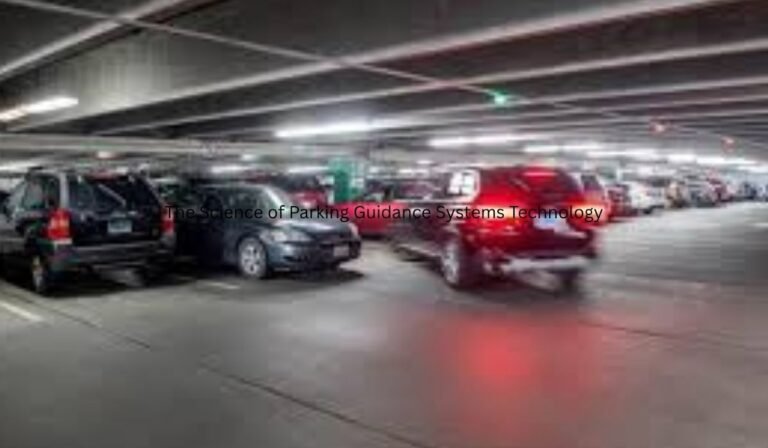Key Takeaways
- Parking Guidance Systems (PGS) leverage cutting-edge sensors, real-time data, and advanced analytics to transform urban parking.
- Recent advancements in artificial intelligence and IoT have pushed the efficiency, accuracy, and predictive capacity of PGS to new levels.
- Successful deployments demonstrate PGS’s value in reducing congestion and improving operational efficiency; however, challenges remain in cost, integration, and maintenance.
- The future of PGS lies in sustainability, data-driven management, and seamless integration with autonomous vehicles and smart city infrastructure.
Introduction to Parking Guidance Systems
Urbanization has placed immense pressure on traditional parking methods, leading to longer search times, congestion, and increased emissions. Innovative parking garage technology for smart cities addresses these concerns, reshaping the way urban dwellers and visitors experience mobility in crowded city environments. Parking Guidance Systems (PGS) are designed to guide drivers directly to available spots, minimizing frustration and saving both time and energy.
Modern PGS platforms combine sensor networks, integrated data technology, and real-time user interfaces, reducing the “cruising” behavior that’s a leading contributor to city center traffic. By displaying up-to-date space availability within parking facilities and through mobile apps, these systems significantly reduce the time drivers spend searching for parking, resulting in lower emissions and an improved quality of urban life.
Not only do commuters benefit, but business owners, municipal leaders, and facility operators are turning to PGS for streamlined operations, enhanced customer experiences, and environmentally conscious city planning. As cities prioritize sustainability and technological integration, PGS is becoming an essential tool for mobility management in smart cities.
- Sensors: From ultrasonic and infrared sensors to license plate recognition and camera-based detection, these devices provide the critical, real-time data about space occupancy in garages and lots.
- Data Processing Units: Acting as the system’s “brain,” centralized servers aggregate and analyze inputs from hundreds of sensors, determining which bays are vacant or occupied.
- User Interfaces: Information must be made accessible and actionable. Digital signage, smartphone apps, and web integrations provide this data directly to users in user-friendly formats.

Together, these elements operate in tandem to provide a seamless experience, adapting dynamically as the number of available spaces fluctuates.
Technological Innovations in PGS
Recent years have seen rapid evolution in the core capabilities of parking guidance technology. One of the most significant advancements is the integration of artificial intelligence, which enables the system not only to recognize current parking status but also to predict future patterns based on historical data and city events. According to TechCrunch, these predictive features enable cities to plan for surges in demand, such as concerts or sporting events, and adjust guidance in near real-time.
The adoption of Internet of Things (IoT) connectivity has also been transformative, allowing sensors, processors, and user interfaces to communicate and synchronize with unprecedented speed and reliability. IoT-driven systems are also easier to integrate with city infrastructure and adjacent smart city services, further expanding their utility.
In addition, cloud-based management and robust cybersecurity measures safeguard sensitive data, a feature that is increasingly vital as PGS becomes more interconnected. Integration with payment platforms and navigation apps further streamlines the driver journey from entrance to exit, enhancing both convenience and operational insight.
Benefits of Implementing PGS
- Reduced Traffic Congestion: By directly guiding drivers to available parking spots, PGS systems reduce search times and lower the number of cars circulating in city centers.
- Improved User Experience: With reduced stress and wait times, both commuters and visitors find the parking process far more pleasant.
- Operational Efficiency: Facility managers gain actionable insights into usage patterns, enabling optimized staffing, maintenance, and even dynamic pricing models based on demand.
- Environmental Impact: By minimizing unnecessary driving, PGS helps reduce greenhouse gas emissions, supporting broader sustainable development goals.
Challenges in PGS Deployment
Despite their clear value, deploying PGS is not without its obstacles. Initial investment can be significant, especially for large facilities or municipalities transitioning from legacy infrastructure. Technical challenges often arise in the integration process, particularly when retrofitting older sites with modern sensors and connectivity. Ongoing maintenance and the need to update digital infrastructure can stretch operational budgets.
Mitigating these issues requires long-term planning, cross-departmental collaboration, and vendor partnerships that prioritize adaptable and scalable solutions. Public-private initiatives, phased rollouts, and pilot programs have proven effective in facilitating the transition to widespread adoption.
Future Trends in Parking Guidance Technology
- Integration with Autonomous Vehicles: As self-driving cars become mainstream, parking facilities will require systems capable of directing and interacting with autonomous vehicles, managing both occupancy and robotic valet services.
- Advanced Data Analytics: Sophisticated analytics will enable cities to monitor parking trends, optimize layouts, and adjust pricing in real-time, thereby enhancing city planning and improving resource utilization.
- Sustainable Practices: As climate goals drive city planning, future PGS deployments will focus on minimizing energy use, integrating with electric vehicle infrastructure, and implementing systems that adapt in real-time for maximum environmental benefit.
The next generation of parking guidance is set to usher in a new era of efficient, eco-friendly, and intelligent mobility for rapidly growing urban communities.
Final Thoughts
Parking Guidance Systems have rapidly matured into essential components of smart city mobility. With technologies rooted in real-time data, AI, and IoT, PGS solutions are poised to help cities meet the immense mobility challenges of the coming decades—promoting convenience, efficiency, and sustainability in equal measure.
